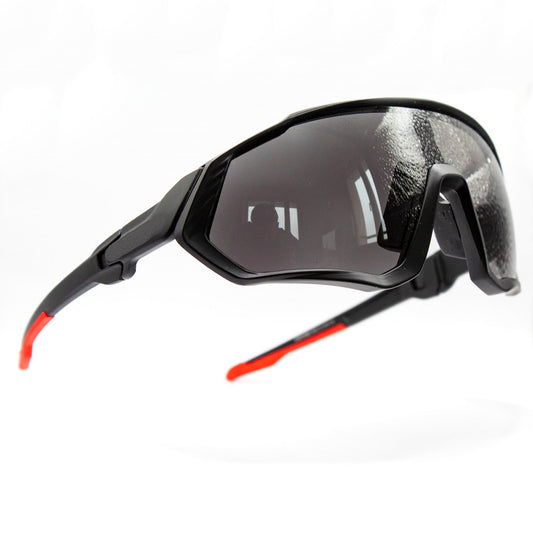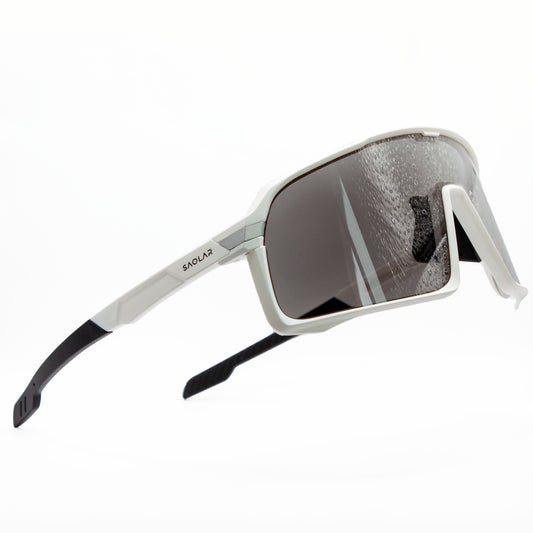Introduction
Understanding the Essentials of Bike Signals
As cyclists, we navigate a world shared with various vehicles, making the mastery of cyclist hand signals not just a courtesy, but a necessity for safety. Bike signals serve as a critical tool for communication on the road, helping to prevent accidents and ensure a harmonious coexistence with motorists and fellow cyclists. By adopting these signals, you contribute to a safer cycling environment for everyone. Discover more about keeping yourself safe on the road with our comprehensive Bicycle Safety Checklist.

Left Turn: Essential Bicycle Hand Signal
Mastering the left turn signal is a fundamental aspect of road cycling. It's crucial to clearly communicate your intention to turn left, ensuring your safety and the safety of others. To execute the left turn signal effectively:
- Positioning: Ensure you're visible to other road users.
- Signal Timing: Signal well in advance of the turn.
- Arm Gesture: Fully extend your left arm horizontally to the side.
- Maintain Visibility: Keep your arm visible until you begin the turn.
By using these hand turn signals and bike turn signals correctly, you enhance your visibility and predictability on the road. For more insights into effective cycling practices, consider exploring our Expert Training Plan Tips.
Right Turn Bike Signals Simplified
When it comes to signaling a right turn, clarity and visibility are key. Here's how to effectively use the right turn signal with the right arm:
- Visibility Check: Before signaling, ensure it's safe to do so.
- Right Arm Extension: For the signal, extend your right arm fully out to your side.
- Steady Positioning: Keep your arm straight and steady to clearly convey your intention to turn right.
Utilizing these turning hand signals and bicycle hand signals not only enhances your safety but also assists in making your intentions clear to those around you, contributing to a safer cycling environment for all.
Alternative Right Turn Cyclist Hand Signal
While the standard right arm outstretched signal is widely recognized, there's an alternative method especially useful in certain situations or jurisdictions.
- Left Arm Usage: This method involves using the left arm instead of the right.
- Signal Formation: Extend your left arm out to the side and then bend it upwards at the elbow, forming a 90-degree angle.
- Visibility and Clarity: This signal is clear and visible, especially important in heavy traffic or complex road layouts.
Incorporating this method into your repertoire of bike signs and hand signals when riding a bike ensures that you are prepared for any cycling scenario, enhancing your communication and safety on the road.
Stop Signaling Bike Safety Hand Signal
Effective stop signaling is crucial for ensuring safety while biking. Here's how to communicate a stop intention:
- Preparation: Before signaling, ensure it's safe and you're visible to others.
- Arm Position: Extend your left arm horizontally then bend it downwards at a 90-degree angle, hand open.
- Visibility: Maintain this position until you're sure you've been seen and it's safe to stop.
This method is a key part of what are the bike hand signals and bike safety hand signals, vital for preventing accidents. For more tips on comfortable and safe riding, explore our guide on Comfort Tips for Riders.
Slow Down Hand Turn Signal
Effectively signaling a slowdown is a critical aspect of road safety for cyclists. Here's how to do it right:
- Pre-Signal Check: Ensure it's safe to signal and that you are visible.
- Arm Movement: Extend your left arm out and slightly down, with your palm facing backward.
- Signal Clarity: Wave your hand up and down to clearly indicate slowing down.
This method is an integral part of bike signals and cyclist hand signals, helping to prevent sudden reactions from other road users and maintaining a safe cycling environment.
Give Way: Basic Bike Signs

The give way signal is a key component in cyclist communication, embodying courtesy and safety on the road. Here's how to effectively use it:
- Preparation: Be sure you're visible to other cyclists and motorists.
- Hand Gesture: Extend your left or right arm at a slight angle downward and gently wave forward.
- Signal Timing: Use this signal to let others know it's safe for them to proceed.
This gesture falls under hand turn signals and bike turn signals, playing an important role in fostering a respectful and safe cycling environment.
Pothole Alert Turning Hand Signals

Signaling the presence of road hazards such as potholes is crucial for the safety of all cyclists. Here's the right way to do it:
- Alertness: Be vigilant for potential hazards on your route.
- Pointing Signal: Extend your arm and point directly at the hazard, such as a pothole, to alert those behind you.
- Consistency: Maintain the signal until you are sure the riders behind have noticed the hazard.
This is an essential part of turning hand signals and bicycle hand signals, helping to prevent accidents and ensure a safer cycling experience for everyone.
Right Arm Left Turn Bike Signals
Using the right arm for signaling a left turn is an alternative method that can enhance visibility and safety. Here's how to use it:
- Signal Formation: Extend your right arm upwards at a 90-degree angle.
- Visibility Check: Ensure the signal is visible to others around you.
- Arm Positioning: Keep your arm in this position to clearly indicate your intention to turn left.
This technique is part of the bike signs and hand signals when riding a bike repertoire, offering an effective way to communicate in situations where your left arm may not be as visible.
Left Lane Change Bike Hand Signals
Changing lanes to the left safely is vital for cyclists, and knowing the correct bike hand signals is key. Here's how to signal effectively:
- Pre-Signal Checks: Before signaling, ensure it's safe and you're clearly visible.
- Signal Execution: Extend your left arm out horizontally to indicate your intention to move left.
- Maintain Signal: Keep your arm outstretched until you start changing lanes, ensuring continuous communication with other road users.
This technique falls under what are the bike hand signals and bike safety hand signals, essential for navigating through traffic safely and confidently.
Right Lane Change Cyclist Signals
Changing lanes to the right safely is a critical skill for cyclists. Here's the right way to signal this maneuver:
- Safety Check: Always check for traffic before signaling.
- Right Arm Signal: Extend your right arm horizontally to clearly indicate your intention to move right.
- Signal Clarity: Maintain this signal until you start the lane change, ensuring that other road users understand your intentions.
Properly using these bike signals and cyclist hand signals is vital for navigating traffic safely, especially in challenging conditions. For more tips, especially on handling adverse weather, explore our guide on Tips for Cycling in the Rain.
The Critical Role of Hand Signals in Cycling Safety
In conclusion, the use of bike hand signals is not just about adhering to road rules; it's about ensuring personal safety and the safety of others. These signals provide clear communication on your intentions, reducing the risk of accidents. As a cyclist, regularly practicing these signals can significantly enhance your visibility and predictability on the road, leading to safer and more enjoyable rides. Remember, a well-informed cyclist is a safe cyclist. Stay safe and enjoy the ride!








